Jojakko-ji was the hilliest of the temples I visited. Winding paths led higher and higher up the mountain until I could see Kyoto in the distance. The temple was founded around the end of the 16th century by Nisshen, 16th Head Priest of Honkoku-ji. Jojakko-ji’s website offers a step-by-step primer on the temple.

Niomon gate
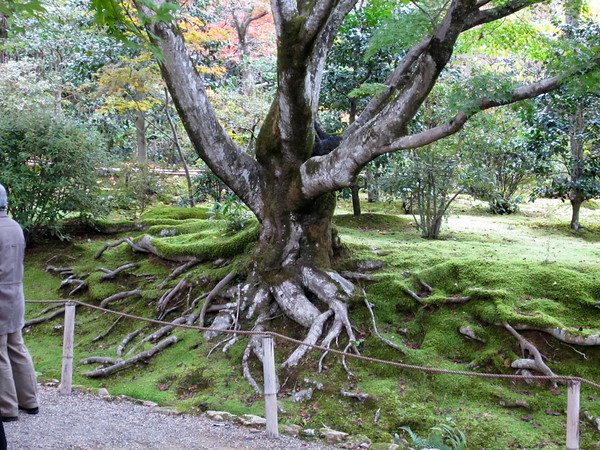
Great roots
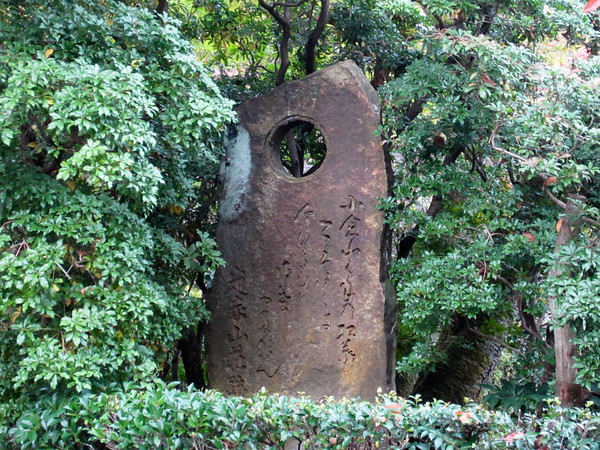
Memorial stone
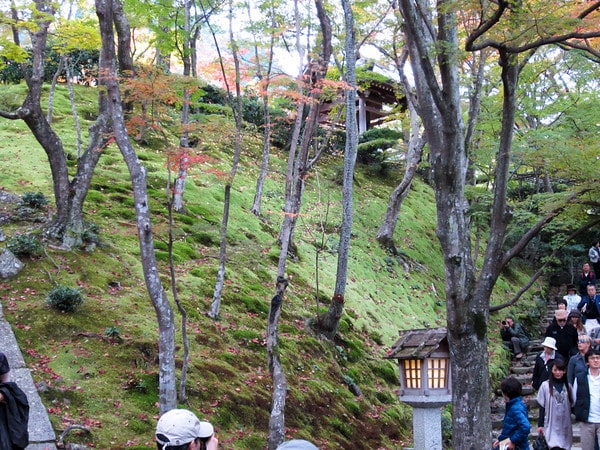
Mossy hillside
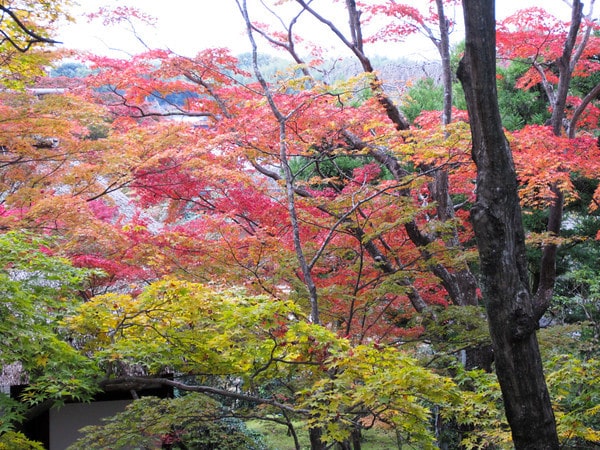
Although the maples at Jojakko-ji were a week or two shy of peak color, there was still plenty to be seen
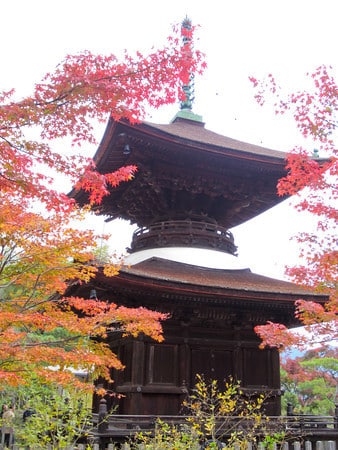
Tahoto (two-storied) Pagoda
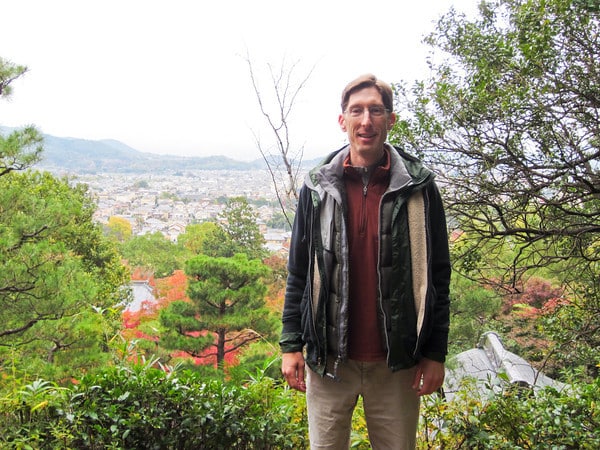
Atop Jojakko-ji – Kyoto in the distance
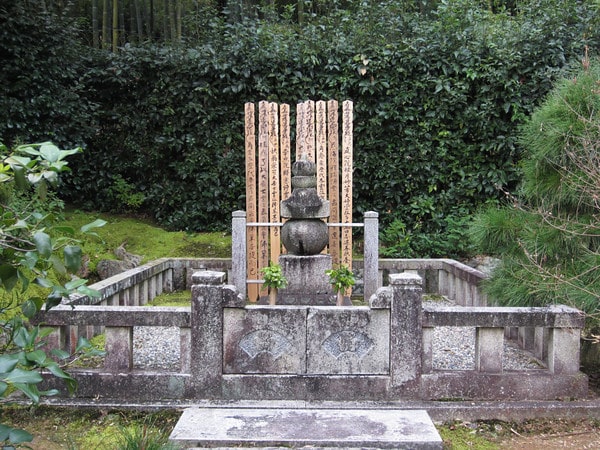
Grave
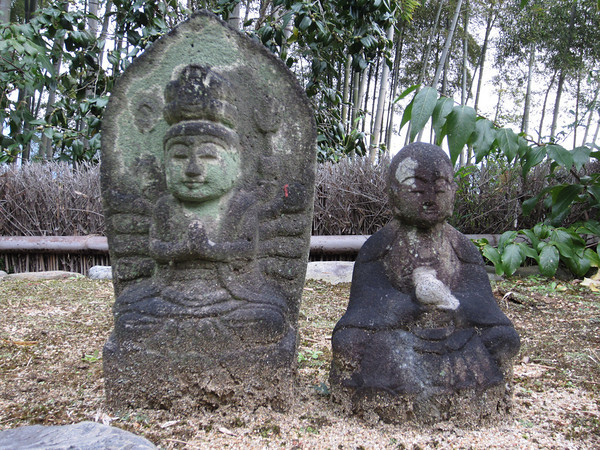
Stone figures
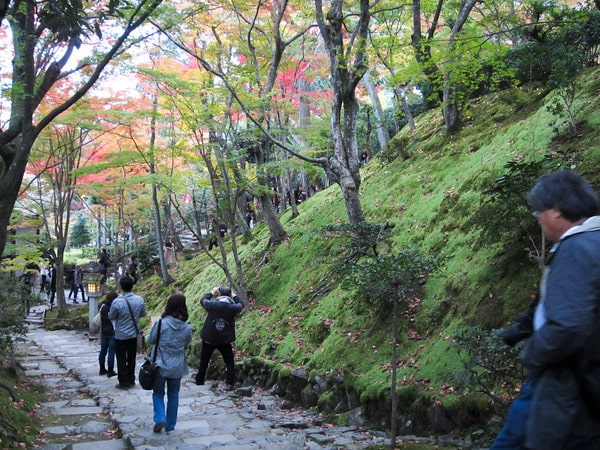
Moss and maples
It took a while for me to find the next temple. Numerous pedestrian paths clogged with tourists wind through hills, houses, shops and an intimidating bamboo forest. I passed this bamboo gate just above the bamboo forest.
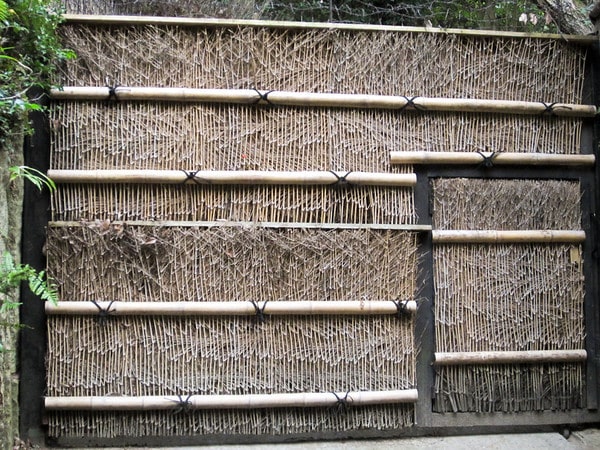
Bamboo gate
Fortunately, I made it to Tenryu-ji, Temple of the Heavenly Dragon, before dusk settled in. The entrance was understated. Once inside, I found an animated group pitching coins into a pond, trying to land the offerings in the lap of a frog atop a frog.
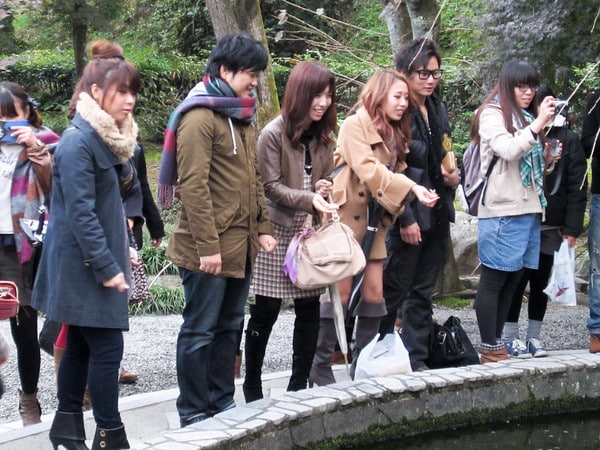
Good luck!
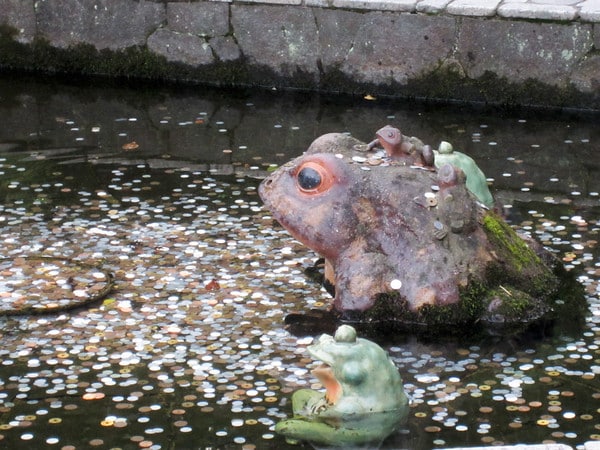
Pond with frogs and yen
Further inside the complex, I saw people strolling along a covered walkway that connected the various temple buildings. I couldn’t for the life of me find my way inside.
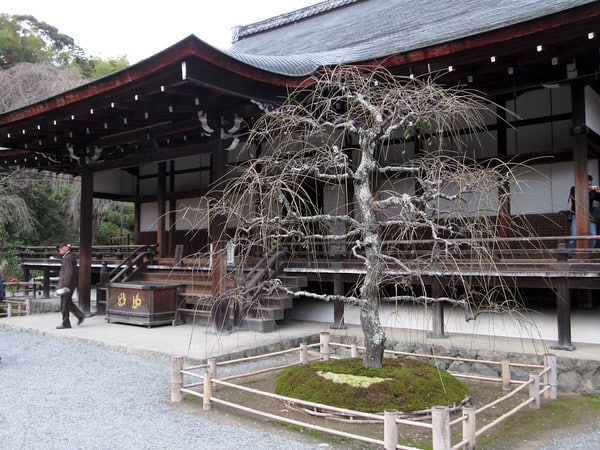
Tahoden
Rounding yet another aged temple building, I beheld Sogenchi Garden.
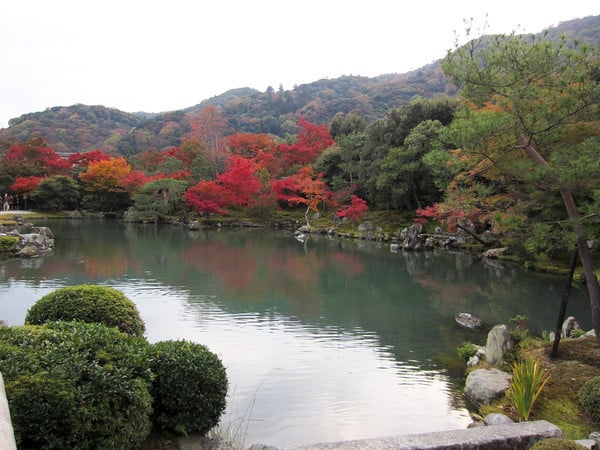
Sogenchi Garden
The garden was beautiful – and famous. I’d seen it in many Japanese landscape books. Turns out it is quite old. It was designed in the 14th century by Musou Soseki. It was the first Special Historical Scenic Area named by the Japanese government and has since been recognized as a UNESCO World Cultural Heritage site. The main hall was located right next to the garden.
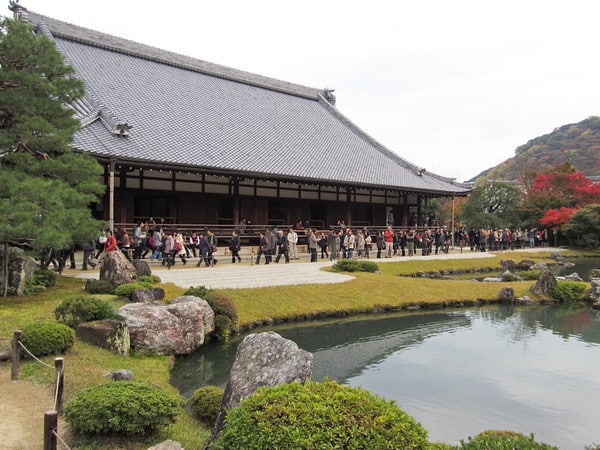
Main Hall
The current main hall was built in the late 19th century. Over the years, the temple has been struck by fire 8 times, most recently in 1864. Set square against the pond, it offered great views of the garden. But I still couldn’t find a way in.
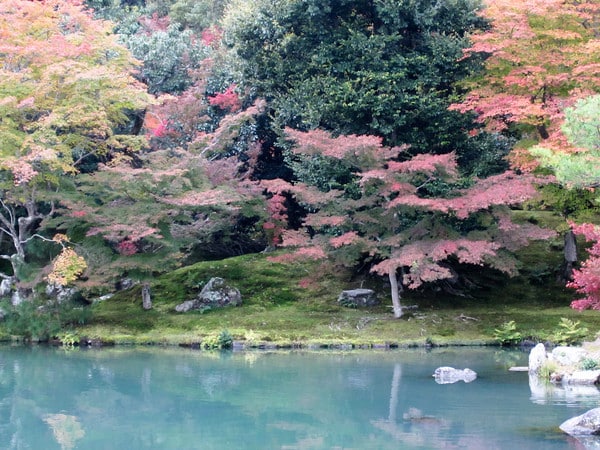
Maples across the pond
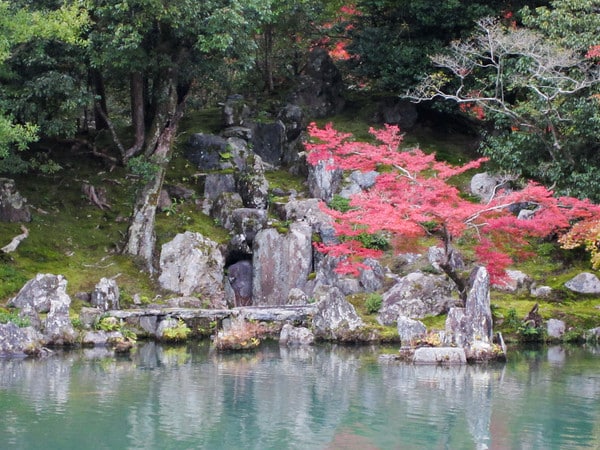
Great stone work
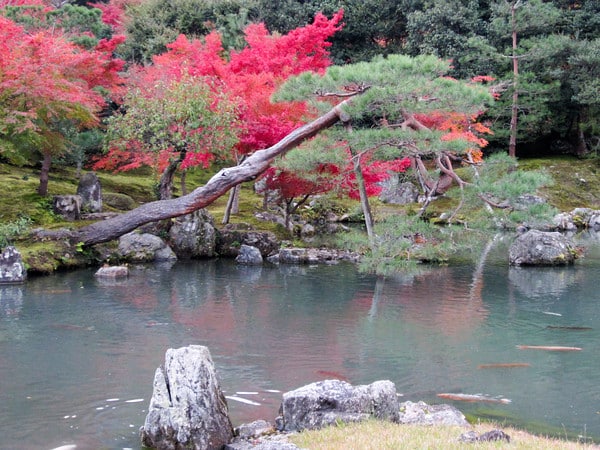
Famous red pine reaching across the water
Tenryu-ji has taken advantage of the Internet. They have a website and a twitter feed that features great photos of the garden throughout the year – it’s worth a visit.
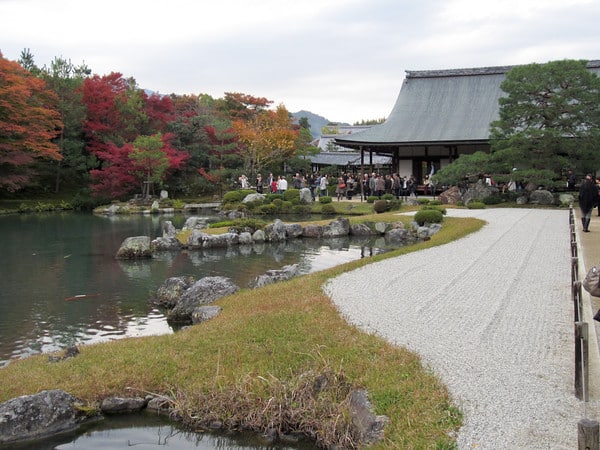
Sogenchi garden and Main Hall
I left Tenryu-ji happy to have seen the garden, but puzzled at having missed the entrance to the temple buildings. As I headed toward Togetsu-kyo Bridge, Arashiyama’s tourist hub, I found more and more tourists. I headed against traffic for about half an hour before I saw the entrance to the temple. Turns the garden entrance and temple entrances are at opposite ends of the complex. Out front, I discovered one of my favorite stone arrangements.
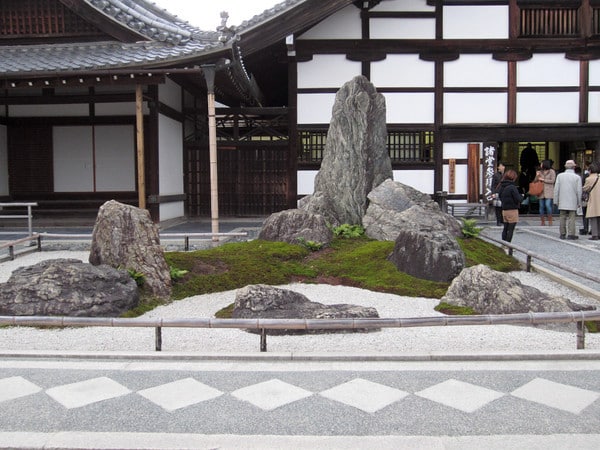
Stone garden in front of Tenryu-ji
Once inside, I traversed the covered walkway and peered inside the temple buildings. Having finally seen the place inside and out, I spent my remaining time appreciating the garden.
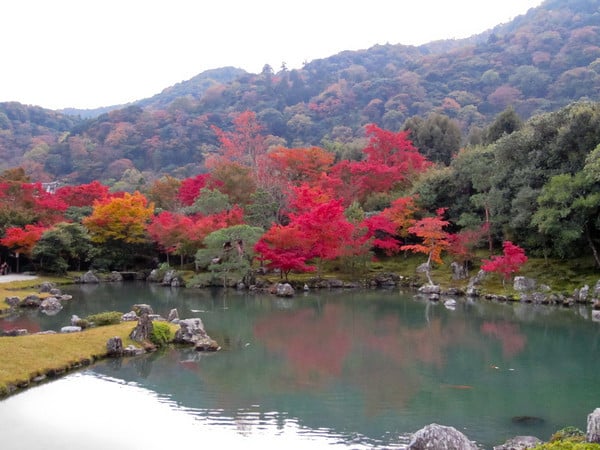
Sogenchi garden from the main temple hall
So ended my two-day visit to Kyoto’s gardens. The next day I woke early to help with the setup at Taikan-ten. Before returning to my hotel in Otsu, I walked through downtown Kyoto and passed, again, the winding streets below Kiyomizu-dera where I found a shrine illuminated by scores of lanterns.
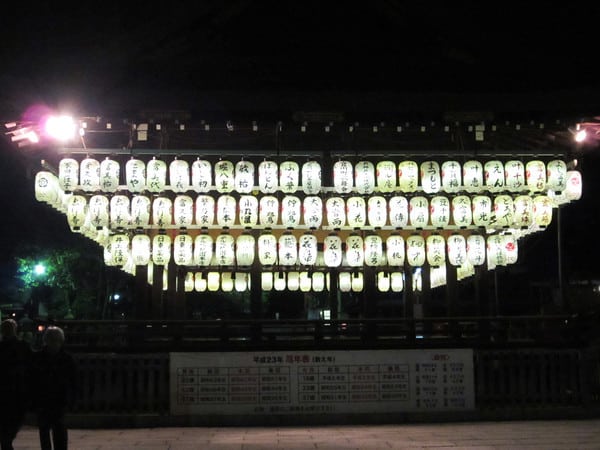
Yasaaka Shrine
Thanks for visiting Kyoto with me. I will return to the regularly scheduled bonsai blogging next week. Happy New Year!
Subscribe to Bonsai Tonight
New Posts Delivered Every Tuesday and Friday
Cirilo Domine says
You do inspiring work. Thank you for sharing. And Happy New Year!!!
David says
Happy New Year for u 2.
Impressive reports and what a great pic’s. I love all of them… tx!
Those maple colors are impressive. They know how to make a great garden.
Regards
David